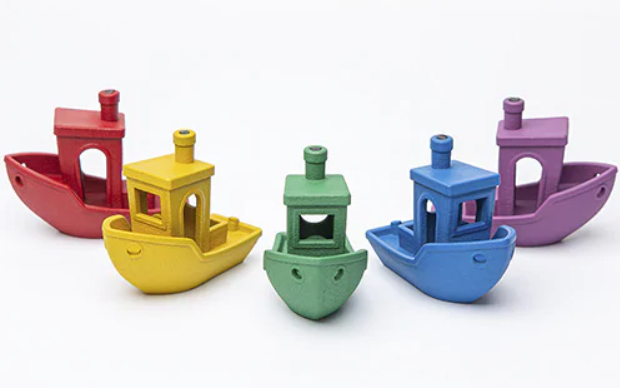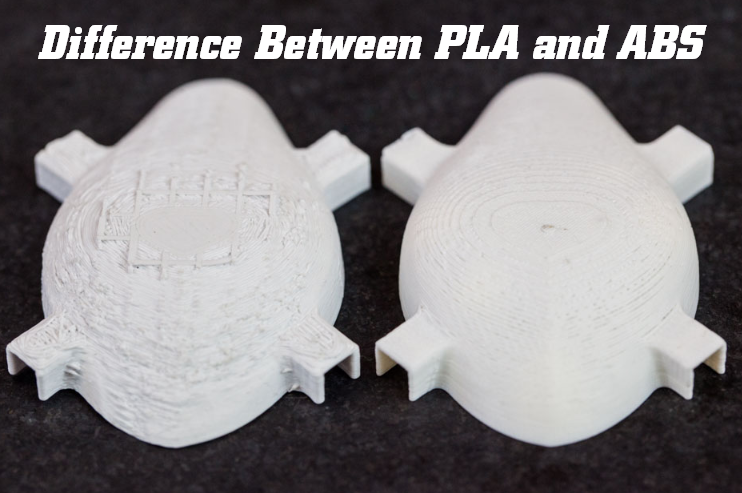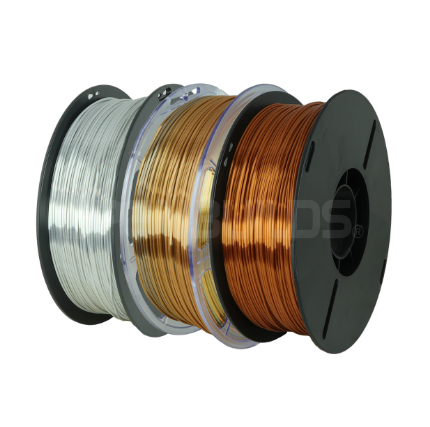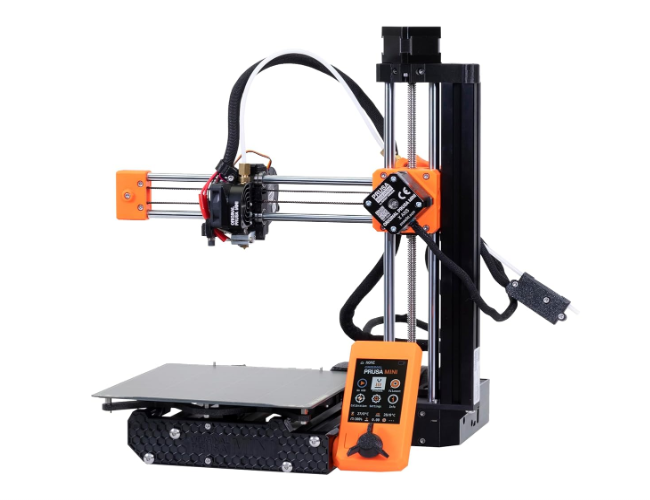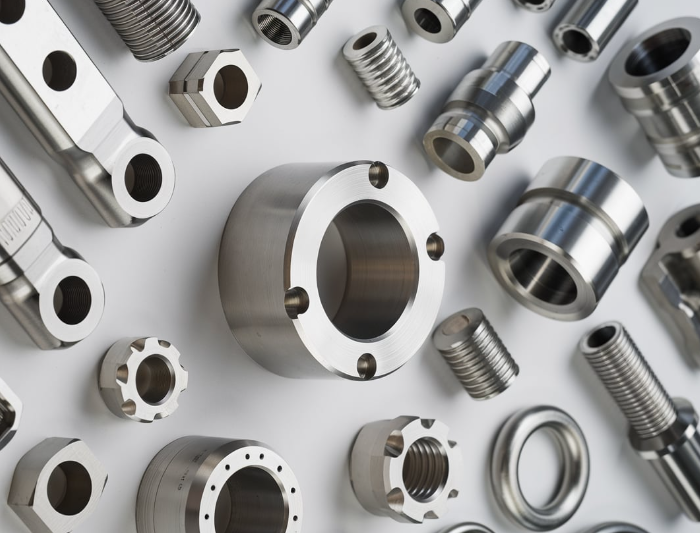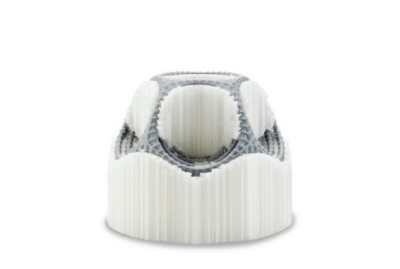PETG is a popular and easy-to-print material. What is it used for, and what are the best 3D printing settings for the filament? This article provides an overview of the PETG material, focusing on its properties, applications, printing settings, and differences between PLA and PETG filament.
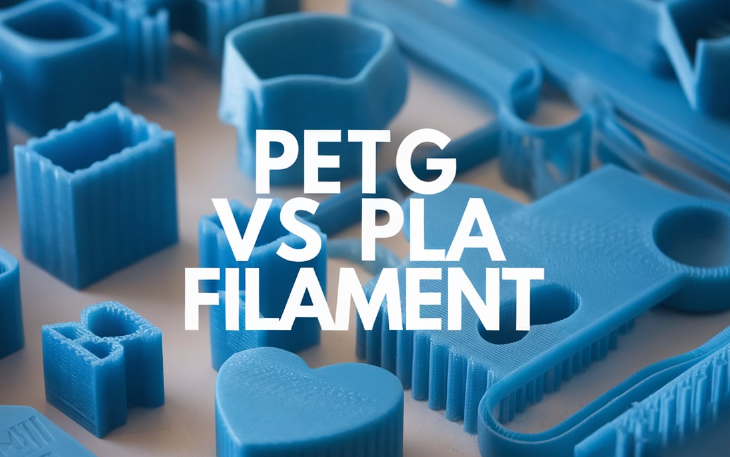
What Is PETG Material?
Polyethylene Terephthalate Glycol (PETG) is a thermoplastic polyester that is a modified form of polyethylene terephthalate (PET). The addition of glycol in PETG fundamentally changes its chemical structure compared to regular PET. PETG replaces some of the ethylene glycol found in PET with a different glycol called cyclohexanedimethanol (CHDM). This makes PETG more flexible and less prone to warping during 3D printing because amorphous materials cool more evenly without the density shifts caused by crystallization. Consequently, PETG is easier to print and offers glossy or transparent finishes without sacrificing much rigidity.
Historically, PETG was developed through the pioneering efforts of British scientists James Dickson and John Whinfield in 1941. This material is particularly popular for FDM (Fused Deposition Modeling) 3D printing because of its ease of use on most FDM printers and balanced mechanical properties. Its chemical resistance and durability make it suitable for a variety of applications, including food-safe packaging and retail signage. Additionally, PETG offers good light diffusion, which is beneficial for products like lampshades and functional prototypes.
PETG 3D Printing Applications
- Industrial and manufacturing: functional prototypes, end-use parts, mechanical components like gears and brackets, durable tools, jigs, fixtures, machine guards, safety barriers, electronic enclosures, etc.
- Consumer products: household items, custom packaging, containers, consumer electronics casings, retail displays, signage, and lighting fixtures.
- Transportation: automotive interior/exterior components, drone parts, RC vehicle components, and custom brackets and accessories.
- Medical and food: medical device components, dental aligners, equipment, food containers, and FDA-approved food-contact packaging applications.
- Educational fields: architectural models, teaching aids, artistic projects, sculptures, cosplay props, costume accessories, and display prototypes.
- Other industries: aquarium components, ductwork, plumbing fittings, window replacements, transparent components, and custom vacuum forming and pressure forming parts.
PETG 3D Printing Settings
To get the best possible PETG 3D printed parts, here are the recommended printing settings, including temperature, speed, and more.
|
Setting |
Recommended Range |
|---|---|
|
Nozzle Temperature |
220–260 °C |
|
First Layer Temperature |
230 °C |
|
Subsequent Layers Temperature |
240–245 °C |
|
Bed Temperature |
65–90 °C |
|
Print Speed |
Up to 60 mm/s |
|
Travel Speed |
120 mm/s (double print speed) |
|
Retraction Distance |
3–7 mm (higher for Bowden) |
|
Retraction Speed |
20–25 mm/s |
|
Fan Speed |
30–60% (after first few layers) |
|
Infill Density |
20–30% |
|
Support Z Distance |
At least 2x layer height |
Additional Considerations
- Build Surface: Use textured surfaces like PEI or blue tape to prevent over-adhesion.
- Cooling: Minimal cooling is generally better; enable fans after the first few layers.
- Filament Storage: Keep PETG dry to avoid moisture absorption.
PETG Filament/Material Properties
PETG is a transparent thermoplastic and amorphous polymer. What characteristics does its structure give it? What makes it widely applied in 3D printing?
- Allows more stretch than PET and is less rigid
- Easy to print and manage during 3D printing, not prone to warping
- Can be easily molded through injection molding and extrusion
- Excellent chemical resistance and water/moisture resistance
- Food-safe, can be manufactured for containers that contact food directly
- Environmental-friendly and fully recyclable
- Comes in transparent but can be colored easily
- Good strength and impact resistance
| Property | Typical Value |
|---|---|
| Density | 1.24 g/cm³ at 21 ºC |
| Bulk Density | 0.73 g/cm³ |
| Intrinsic Viscosity | 0.80 dl/g |
| Water Absorption | 0.12% |
| Colour b* | ≤ 1 |
| Colour L* | ≥ 64 |
| Tensile Modulus | 3000 MPa |
| Tensile Yield Stress | 53 MPa |
| Elongation at Yield | 4% |
| Tensile Strength | 53 MPa |
| Elongation at Stress | 4% |
| Stress at Break | 19 MPa |
| Nominal Elongation at Break | 31% |
| Flexural Modulus | 2040 MPa |
| Flexural Stress | 171 MPa |
| Deflection at Flexural Strength | 8.6 mm |
PETG vs PLA Filament – Differences Between PLA and PETG
Polylactic Acid (PLA) is one of the most popular 3D printing materials. Let’s look at the differences between PETG and PLA.
1. Printing Difficulty
PLA is widely regarded as one of the easiest filaments to print with, making it ideal for beginners. It requires lower extrusion temperatures (190-220°C), does not need a heated bed, and is less sensitive to environmental factors such as temperature fluctuations and slicer settings. PETG, on the other hand, requires higher extrusion temperatures (220-260°C) and a heated bed (75-90°C). PETG is also prone to stringing, where excess material creates wispy plastic strands.
2. Strength
Is PETG stronger than PLA? PETG is not stronger than PLA in terms of tensile strength. PETG has better layer adhesion due to higher printing temperatures, making it less brittle and more resistant to impacts. It tends to bend rather than shatter under stress. PLA, while having slightly higher tensile strength, is more brittle and prone to cracking or breaking under sudden forces. This makes PLA ideal for low-stress, decorative applications but unsuitable for functional parts that experience wear or impact.
3. Resistance to Environmental Factors
PETG is highly resistant to moisture, UV rays, and high temperatures, so it is suitable for outdoor applications and environments with harsh conditions. PLA, in contrast, is sensitive to heat and UV exposure. PLA parts can soften and deform at temperatures above 60-65°C and discolor with prolonged sun exposure. While PLA is biodegradable under industrial composting conditions, it is not suitable for outdoor use where durability is required.
4. Flexibility
PETG is more flexible than PLA, allowing it to withstand bending and impact forces without breaking. This flexibility makes PETG ideal for applications where parts may encounter physical stress. PLA is comparatively stiffer and less flexible, which can be advantageous for certain applications but also increases its likelihood of cracking or breaking under stress.
5. Temperature Resistance
PLA has a lower melting point and glass transition temperature (around 60-65°C), which limits its use in high-temperature environments. PETG, with a higher melting point and glass transition temperature (around 80-85°C), retains its shape and strength better in heat-intensive applications, such as outdoor use or functional prototypes.
6. Biodegradability
PLA is derived from renewable resources like corn starch and sugarcane, making it more sustainable than PETG, which is petroleum-based. PLA is biodegradable under industrial composting conditions, though it does not decompose easily in home composting setups. PETG is not biodegradable but is recyclable, with a more established recycling process compared to PLA. However, PETG’s production from non-renewable sources offsets some of its environmental benefits.
7. Post-Processing
PLA is easier to post-process than PETG. PLA supports can be easily removed, and they can be sanded, painted, or smoothed with relative ease. PETG, however, has stronger adhesion properties, making it harder to remove supports without damaging the print. PETG is easier to sand for a glossy finish, but cannot be painted as easily as PLA. PETG’s transparency is an advantage in certain applications, such as food containers or industrial parts.
8. Applications
PLA is best suited for decorative items, prototypes, toys, and educational tools due to its ease of use and aesthetic quality. It is commonly used for low-stress applications where mechanical or environmental durability is not critical. PETG, on the other hand, is ideal for functional parts that may encounter stress, chemicals, water, or sunlight. It is often used in the food industry for containers and medical tools due to its durability and chemical resistance.
9. Cost
While PLA is often considered cheaper, the price difference between PLA and PETG is minimal. Both materials are available in a wide price range depending on quality and additives. PLA is typically slightly cheaper for hobbyist-grade filaments, but higher-end PLA and PETG filaments can be similarly priced, especially if enhanced with additives like carbon fiber.
PLA vs PETG Comparison Chart
|
Attribute |
PETG |
PLA |
|---|---|---|
|
Ease of Printing |
Moderate difficulty compared to PLA |
Very easy |
|
Flexibility |
Flexible and impact-resistant; bends before breaking |
Stiff but brittle; cracks or shatters under stress or impact |
|
Strength |
Lower tensile strength |
Slightly higher tensile strength, but brittle |
|
Temperature Resistance |
Higher resistance (up to 80–85°C) |
Lower resistance (up to 60–65°C) |
|
UV/Weather Resistance |
Excellent; resistant to UV rays, water, and harsh environments |
Poor; degrades and discolors with UV exposure and warps in warm conditions. |
|
Moisture Resistance |
Resistant to water |
Poor; absorbs water over time |
|
Chemical Resistance |
Resistant to many chemicals |
Poor, vulnerable to chemicals |
|
Transparency |
Can be printed with transparent or translucent properties |
Limited transparency options, more opaque. |
|
Biodegradability |
Non-biodegradable |
Biodegradable under industrial composting conditions |
|
Post-Processing |
Moderate difficulty |
Easier to post-process |
|
Odor During Printing |
Odorless or mild plastic smell |
Slightly sweet smell during printing |
|
Applications |
Functional parts, food-safe containers, outdoor items, protective casings, and mechanical parts |
Decorative items, toys, prototypes, low-stress applications, and educational tools |
|
Cost |
$15–$25 per kg; slightly higher for specialty PETG filaments |
$12–$20 per kg; low-end PLA is cheaper, but high-end PLA filaments with additives can be similarly priced to PETG. |
|
Printing Temperature |
220–260°C (extrusion); requires a heated bed at 75–90°C |
190–220°C (extrusion); no heated bed required (optional 50–60°C for better adhesion) |
|
Stringing/Oozing |
High tendency |
Low tendency |
|
Durability |
High; resistant to wear, fatigue, and environmental exposure |
Low; fragile and prone to cracking over time |
|
Cosmetic Quality |
Fair; can achieve a glossy finish with sanding |
Excellent; smooth and clean prints with minimal effort |
|
Recyclability |
100% recyclable, but considered a contaminant in standard PET recycling |
Recyclable but less commonly accepted in traditional recycling streams |
|
Food Safety |
Food-safe options are available; check for FDA-approved filaments |
Food-safe options are available, more limited in applications |
|
Weight |
Heavier than PLA due to its higher density |
Lightweight; less dense than PETG |
|
Surface Finish Options |
Glossy finish is achievable with post-processing |
Matte or glossy finish is achievable, depending on filament type |
|
Warping/Cracking |
Moderate; requires a heated bed and proper cooling |
Low; minimal warping or cracking even without a heated bed |
|
Tensile Strength (Yield) |
~50 MPa |
~57.4 MPa |
|
Elongation at Break |
~130% |
1.9–4% |
|
Heat Bed Requirement |
Required |
Not required |
|
Safety |
Non-toxic during printing; minimal fumes |
Non-toxic during printing; minimal fumes, but prolonged exposure may release small amounts of lactic acid |
|
Scratch Resistance |
Poor; scratches easily |
Better scratch resistance compared to PETG |
|
Impact Resistance |
Good |
Poor |


